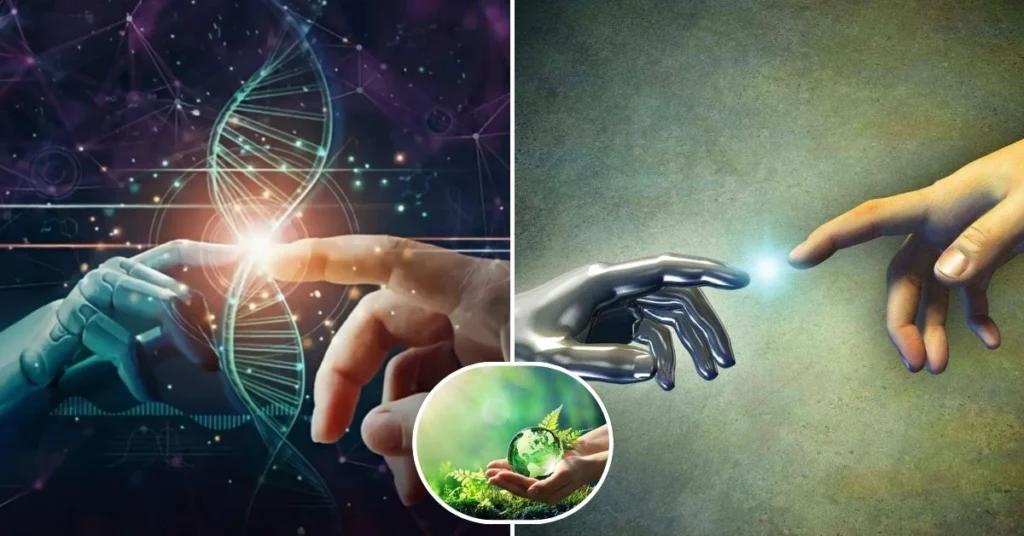Introduction to Human and Nature Relationship
The relationship between humans and nature has always been intricate, a dance of dependency and influence. From the moment early humans first harnessed fire to cook food, we’ve carved out our place in the natural world. But as technology has advanced at an unprecedented pace, this relationship has evolved dramatically. Today, we find ourselves at a crossroads: while modern innovations have brought about incredible conveniences and opportunities for better living, they also pose significant challenges to our environment.
As we navigate through urban jungles and digital landscapes, it’s essential to reflect on how technology shapes our connection with nature. The Human and Nature Relationship and Technology raise critical questions: Are we moving towards sustainability or driving further away from our roots? This exploration takes us deep into the heart of human innovation and its impact on the planet that sustains us all. Join me as we dive into this complex interplay between human ingenuity and the natural world around us.
Evolution of Technology and its Impact on the Environment
The evolution of technology has profoundly shaped our relationship with nature. From the invention of the wheel to today’s advanced AI, each innovation carries a dual impact.
In earlier times, tools were simple and often aligned with natural processes. Human societies thrived alongside their environments, learning sustainable practices. However, as industrialization took hold, this harmony began to wane.
Factories spewed pollutants into the air and rivers brimming with waste became commonplace. The drive for progress often came at a significant cost to ecosystems worldwide. Deforestation accelerated; biodiversity suffered.
Yet not all technological advancements have been detrimental. Renewable energy sources like solar and wind power reflect a turning tide in leveraging tech for environmental health. Innovations such as smart agriculture aim to maximize yields while minimizing harm to land.
As we continue on this journey, it’s essential to evaluate how our choices influence both technology’s role and nature’s fate.
Positive Effects of Technology on the Environment
Technology plays a pivotal role in enhancing our relationship with nature. Innovations in renewable energy sources, such as solar and wind power, significantly reduce reliance on fossil fuels. This shift helps lower greenhouse gas emissions and combat climate change.
Smart agriculture is another area where technology shines. Precision farming techniques optimize resource usage like water and fertilizers, minimizing waste while maximizing crop yields. Drones monitor plant health, ensuring timely interventions that lead to healthier ecosystems.
Urban planning has also benefited from technological advancements. Green architecture incorporates sustainable materials and designs that promote environmental harmony. Smart city technologies enhance energy efficiency in transportation systems, reducing pollution levels.
Moreover, conservation efforts are bolstered through technology. Data analytics help track endangered species more effectively while habitat restoration projects utilize innovative methods for rewilding landscapes.
These positive shifts illustrate how human ingenuity can align with ecological principles to foster a sustainable future where nature thrives alongside technology.
Negative Effects of Technology on the Environment
Technology, while beneficial in many respects, often takes a toll on our environment. The production of electronic devices demands vast resources and energy. Mining for rare minerals can lead to habitat destruction and significant ecological damage.
Waste from discarded electronics contributes to pollution. E-waste contains hazardous materials that can leach into soil and water supplies, posing serious health risks to both humans and wildlife.
Moreover, the carbon footprint associated with manufacturing technology is substantial. Factories release greenhouse gases, exacerbating climate change.
Deforestation also plays a role in this equation. As demand for tech grows, so does the need for raw materials sourced from forests worldwide.
Excessive reliance on technology fosters disconnection from nature itself. Many people spend hours glued to screens rather than engaging with their surroundings or appreciating natural beauty. This detachment can erode our environmental awareness and stewardship over time.
Finding a Balance: Using Technology for Good
Finding harmony between technology and nature is essential for a sustainable future. Embracing innovation serves as a powerful tool to protect our environment rather than deplete it.
For instance, renewable energy technologies like solar panels and wind turbines harness natural resources without harming ecosystems. By investing in these green alternatives, we can reduce reliance on fossil fuels.
Smart agriculture techniques also play a crucial role. Precision farming utilizes data analytics to optimize crop yields while minimizing waste and chemical use. This approach fosters healthier soils and preserves biodiversity.
Furthermore, urban planning increasingly incorporates green spaces through smart city initiatives. These projects promote wildlife habitats amidst bustling metropolitan areas, enhancing the quality of life for both humans and wildlife.
Engaging communities in conservation efforts through technology leads to more informed choices about resource management. With creativity and commitment, we have the potential to create solutions that benefit both humanity and the earth’s intricate systems.
How Humans Can Improve their Relationship with Nature through Technology
Technology can serve as a bridge between humans and nature. By utilizing innovative tools, we can foster a deeper connection with our environment.
Apps that promote mindfulness and nature exploration encourage outdoor activities. They inspire people to engage with local flora and fauna, enhancing appreciation for biodiversity.
Data-driven platforms track environmental health. Citizens can monitor air quality or water purity in real-time, empowering informed decisions about their surroundings.
Smart farming technologies enable sustainable agriculture by optimizing resource use. This not only boosts productivity but also conserves ecosystems.
Virtual reality experiences allow individuals to immerse themselves in untouched landscapes without leaving their homes. Such experiences spark curiosity and concern for conservation efforts.
By integrating technology into daily life thoughtfully, humans cultivate a harmonious bond with the natural world while addressing pressing environmental challenges.
Conclusion
The relationship between humans and nature has always been complex, influenced significantly by technological advancements. As we navigate this modern landscape, it’s clear that technology can be both a friend and a foe to our environment, making the Human and Nature Relationship and Technology a subject of growing importance.
While innovations have led to pollution and habitat destruction, they also provide solutions for conservation and sustainable living. Smart technologies enable better resource management, helping us make informed decisions about the natural world around us, strengthening the Human and Nature Relationship and Technology.
Recognizing the dual impact of technology is essential. It pushes us toward responsible usage—integrating eco-friendly practices into our day-to-day lives while fostering a deeper connection with nature.
Embracing this balance allows us to appreciate what we have while using technology to protect it. The journey ahead will require collaboration among individuals, communities, and industries alike. Finding harmony between innovation and environmental stewardship could redefine how future generations interact with the planet.
As we continue exploring this relationship between human existence, nature’s beauty, and technological progress, one thing remains clear: nurturing our bond with the environment is paramount in securing a sustainable future for all beings on Earth.
Stay updated with the Airtel Open Network to understand how it’s transforming the telecom industry.







